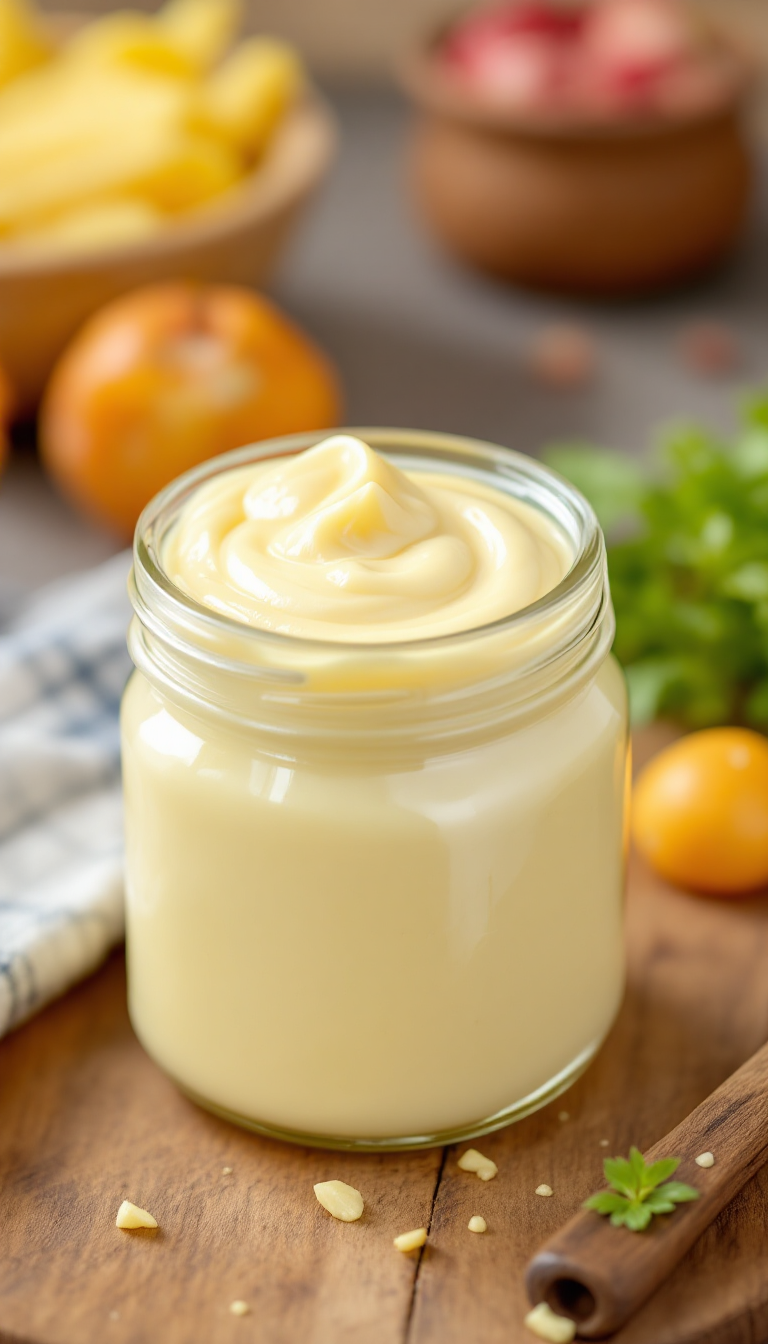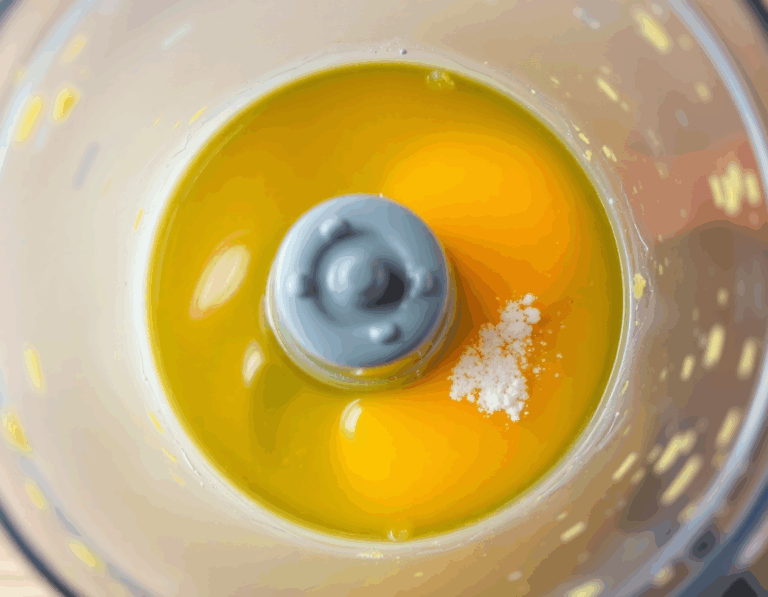Ah, the creamy allure of homemade mayonnaise—it’s like magic, transforming mundane sandwiches into culinary masterpieces. With just a few pantry staples and a whisk (or a trusty blender, if you’re feeling fancy), you can whip up this silky delight faster than you can say “store-bought who?” Plus, there’s something oddly satisfying about knowing you made it from scratch, like discovering a hidden talent you never knew you had.
Steps
- Begin by preparing your equipment. If using a food processor, opt for the smaller bowl attachment to ensure proper emulsification. If you lack this attachment, consider using an immersion blender or a larger batch with the standard bowl.
- Add a whole egg to the small bowl of your food processor and process it for 20 seconds. Follow this by adding mustard, vinegar, and salt, then process for another 20 seconds.
- Scrape down the sides of the bowl, and while the processor is running, start incorporating the oil in small drops. Continue until about a quarter of the oil is added, which is crucial for a stable emulsion.
- As the mixture begins to thicken, increase the oil addition to a thin stream while the processor runs. Once all the oil is incorporated, process for an additional 10 seconds, then taste and adjust seasoning with more salt or lemon juice if needed.
- For the immersion blender method, add all ingredients to a tall jar. Blend by moving the wand slowly up and down to mix thoroughly until the mayonnaise thickens, then taste and adjust seasoning as desired.
Ingredients
- 1 large egg
- 1 tablespoon Dijon mustard
- 1 tablespoon red wine vinegar or white wine vinegar
- 1/4 teaspoon fine sea salt, or to taste
- 1 cup (240 ml) safflower oil or vegetable oil
- 1 teaspoon fresh lemon juice, optional
Nutritional Values
Calories: 2016 | Protein: 0 g | Carbohydrate: 0 g | Dietary Fiber: 0 g | Total Sugars: 0 g | Total Fat: 224 g | Saturated Fat: 16 g | Cholesterol: 192 mg
FAQ
- How long does homemade mayonnaise last in the refrigerator?
- Homemade mayonnaise can be stored in the fridge for up to two weeks. However, it often gets used up more quickly due to its delicious flavor.
- Can I make mayonnaise without using raw eggs?
- This recipe uses raw eggs, but if you’re concerned about using them, you can opt for pasteurized eggs or look for a vegan mayonnaise recipe that doesn’t require eggs.
- What type of oil is best for making mayonnaise?
- A neutral-flavored oil, like safflower or sunflower oil, is recommended for making mayonnaise. Vegetable and canola oils are also suitable. If you choose to use olive oil, opt for a light and fruity variety, and consider using it in combination with a more neutral oil to avoid overpowering the flavor.
- What should I do if my mayonnaise is too thin?
- If your mayonnaise is too thin but properly emulsified, try adding a little more oil in a very thin stream while the food processor is running until you reach the desired thickness. Be careful not to add too much, as it can cause separation.
- How can I fix a broken mayonnaise?
- To fix broken mayonnaise, add a fresh egg yolk and 1/2 teaspoon of vinegar or lemon juice to a clean food processor bowl. Blend, and then slowly incorporate the broken mayonnaise bit by bit, similar to how the oil was added initially.
Tips
- When making mayonnaise, slowly add the oil in tiny drops initially. This gradual addition is crucial for ensuring the mixture emulsifies properly, preventing a runny consistency.
- If you’re concerned about using raw eggs, opt for pasteurized eggs, which can be found in the grocery store, or pasteurize them at home with guidance from an online tutorial.
- Consider using a light and neutral-flavored oil such as safflower or sunflower oil, as it won’t overpower the mayonnaise’s flavor. If you prefer olive oil, use a light, fruity variety, and mix it with a neutral oil.
- If your mayonnaise turns out too thick, gradually incorporate a teaspoon or two of cold water while the food processor is running to achieve the desired consistency.
Equipment
- Food Processor with a small bowl attachment – If you don’t already own a food processor with a small bowl attachment, this is recommended for making mayonnaise.
- Immersion Blender – An immersion blender is an alternative to a food processor for making mayonnaise.
- Tall, Narrow Jar – This is necessary if you choose to use the immersion blender method for making mayonnaise.


